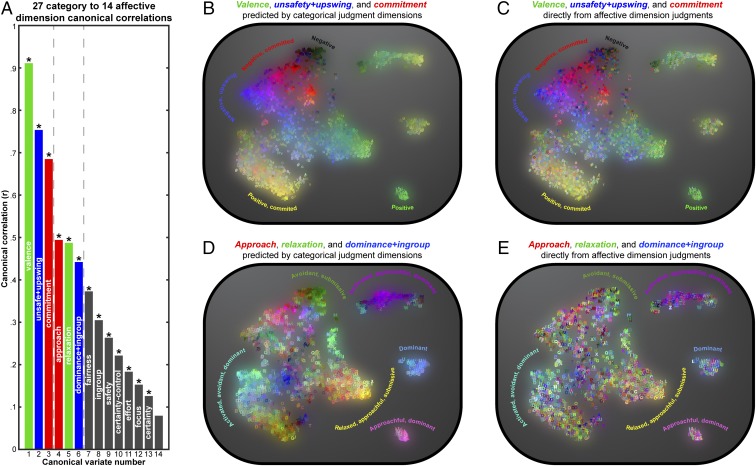Fig. 4.
Canonical correlations analysis between the categorical judgment dimensions and the affective dimensions. (A) The first 13 canonical correlations between the categorical judgment dimensions and the affective dimensions were found to be significant (P < 0.01). We assigned labels to each canonical variate by interpreting its coefficients on the affective dimensions (see Fig. S5 for the coefficients). (B and C). Categorical variates (B) and dimensional variates (C) for the first three canonical correlations, projected as red, green, and blue color channels onto the t-SNE map from Fig. 2A. Color legends are given in the titles for each map. Similarity in colors between E and F illustrates the degree of shared information between the categorical and dimensional judgments for these three dimensions of emotional experience. Labels on each map reflect the combination of loadings on the three dimensions that give rise to each color. (D and E) Like B and C, but for the fourth through sixth canonical correlations. Altogether, B–E illustrate that the categorical gradients correspond to smooth differences in affective dimension (see also Fig. S4 for analysis of gradient smoothness).

